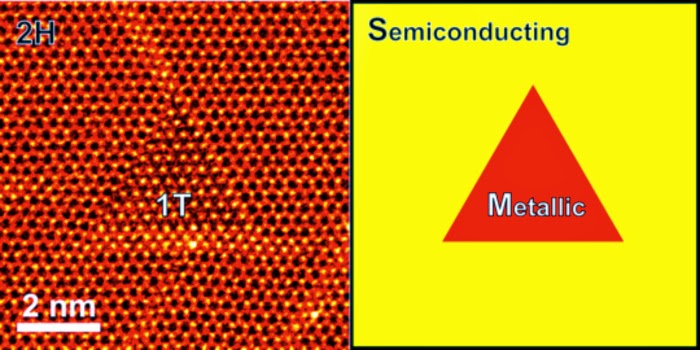Researchers in Japan say they have watched individual atoms rearrange themselves during the semiconductor-to-metal phase transition in molybdenite (MoS2) – a graphene-like material that can occur in sheets just one molecule thick. Until now, such phase transitions were thought of as collective motions of atoms, but the new observations show that atom-by-atom movements are at play. The result could provide important information to researchers trying to create electronic devices from single sheets of MoS2.
Molybdenite is a direct bandgap 2D semiconductor that shows some promise for use in electronics and optoelectronics devices. The mobility of its electric charge carriers is greater than 100 cm2/Vs (and could be as high as 500 cm2/Vs) – values that compare well to silicon. It is a "van der Waals solid", which means that it comprises robust 2D sheets weakly bonded to each other to form a layered 3D structure much like graphite. This means that molybdenite is stable on a variety of substrates – even transparent or plastic ones. Single-layer molybdenite is only about 0.65 nm thick, which means that it can be used to create very thin transistors.
An important property of molybdenite is polymorphism: it has different electronic characteristics depending on the crystal structure of the layers. It is a semiconductor when the sulphur and molybdenum are arranged in a trigonal prismatic structure and it is a metal when the atoms assume an octahedral structure. Both structural phases can be thought of as a central plane of molybdenum atoms sandwiched between two planes of sulphur atoms. Phase transitions were believed to occur when the planes glided over each other – but such a transformation had never been directly observed in an experiment until now.
Physics World: Ultrathin material glides from metal to semiconductor

Comments